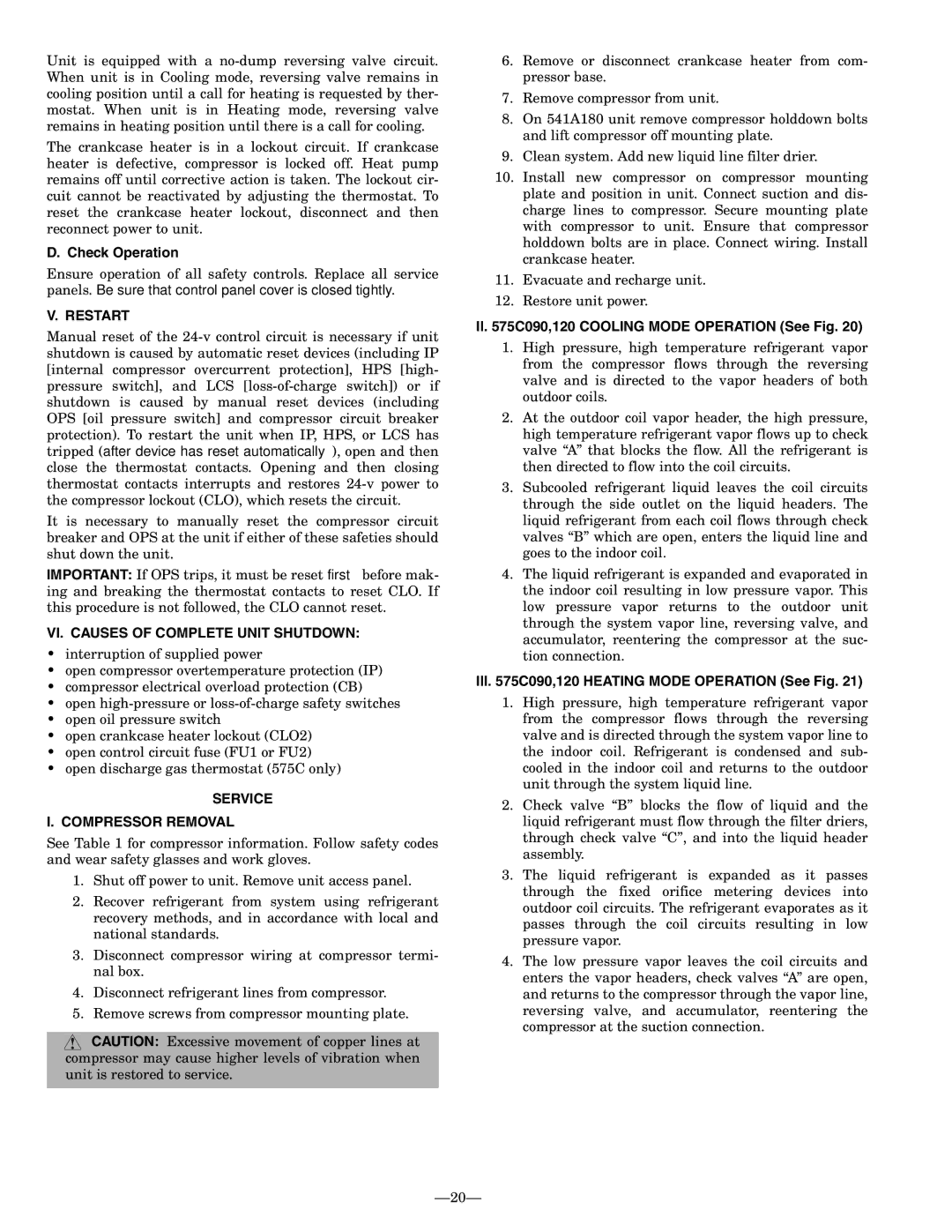541A, 575B, 575C specifications
The Bryant 575B, 541A, and 575C heating and cooling units are part of the renowned Bryant lineup, designed to provide efficient and reliable climate control solutions for residential and commercial spaces. These models are particularly celebrated for their impressive performance, innovative technologies, and user-friendly operations.Starting with the Bryant 575B, this model is a high-efficiency air conditioner that boasts a SEER rating of up to 20.5. It utilizes a variable-speed compressor that adjusts its output based on the temperature needs of the home, leading to enhanced energy savings and consistent indoor comfort. The 575B is equipped with a steel cabinet that resists corrosion and damage while also minimizing noise levels during operation. Additionally, its environmentally friendly R-410A refrigerant helps to reduce the system's ecological footprint.
Moving on to the Bryant 541A, this unit is a formidable gas furnace known for its exceptional heating capabilities. With an AFUE (Annual Fuel Utilization Efficiency) rating of up to 97.5%, the 541A efficiently transforms fuel into heat, ensuring lower energy bills during cold months. It incorporates advanced technologies such as a two-stage gas valve and a variable-speed blower motor, allowing it to respond dynamically to the heating demands of the home. The insulated cabinet construction further enhances energy efficiency by preventing heat loss and increasing comfort.
Lastly, the Bryant 575C model is a versatile heat pump that offers both heating and cooling functionalities, ideal for regions with moderate heating and cooling needs. It features a SEER rating of up to 20 and an HSPF (Heating Season Performance Factor) rating of up to 10.5, making it an energy-efficient choice year-round. The 575C comes with a streamlined design that integrates a variable-speed compressor, which helps maintain precise temperatures and minimizes energy consumption. Additionally, its quiet operation is enhanced by sound insulation, providing a serene indoor environment.
All three models are designed with durability in mind, featuring robust construction materials that withstand the elements. They can be easily integrated with smart thermostats, providing homeowners with greater control over their energy use. With exceptional efficiency ratings, durable designs, and advanced features, the Bryant 575B, 541A, and 575C represent a perfect blend of comfort and cutting-edge technology. Whether for heating or cooling, these units deliver outstanding performance to meet the needs of today's energy-conscious consumers.
